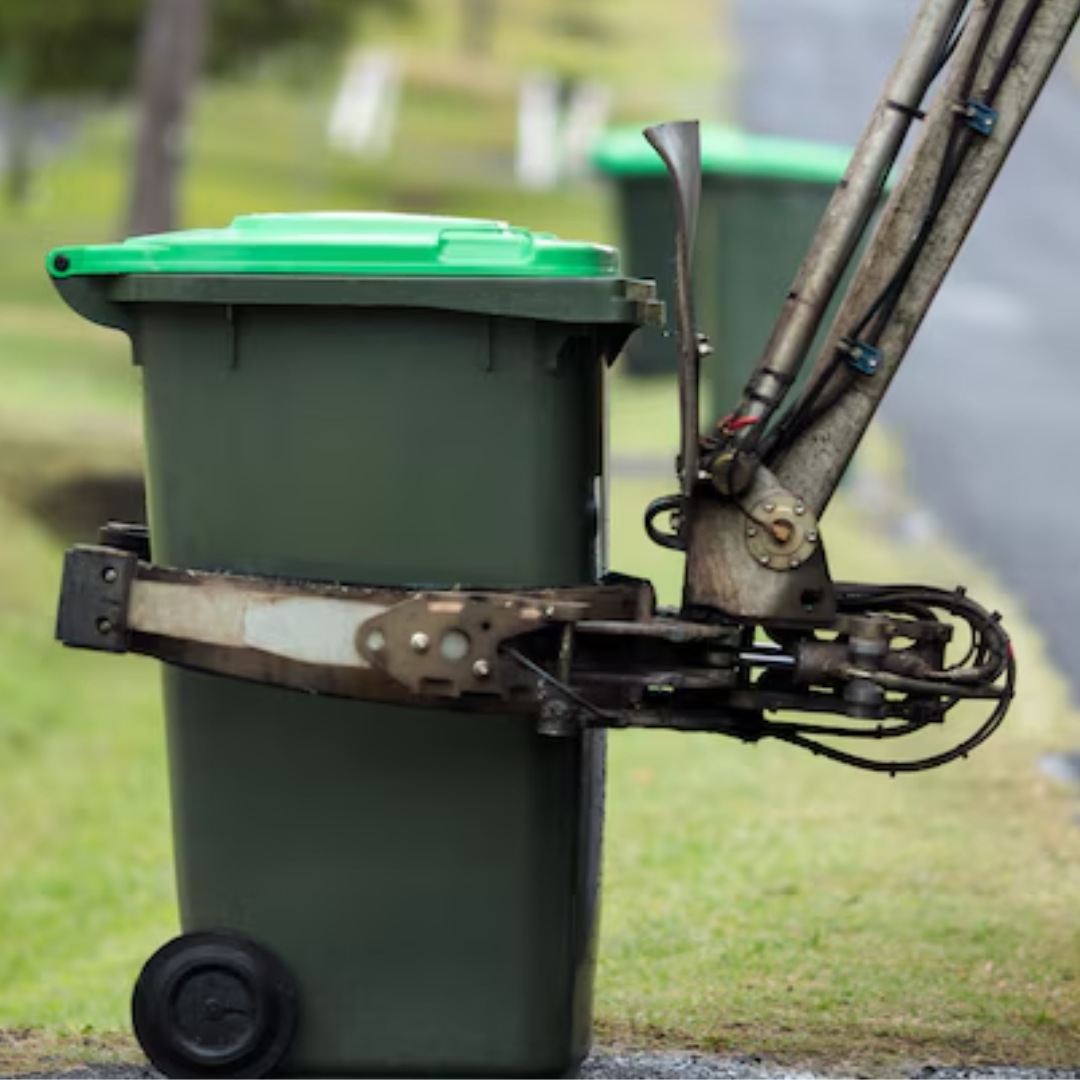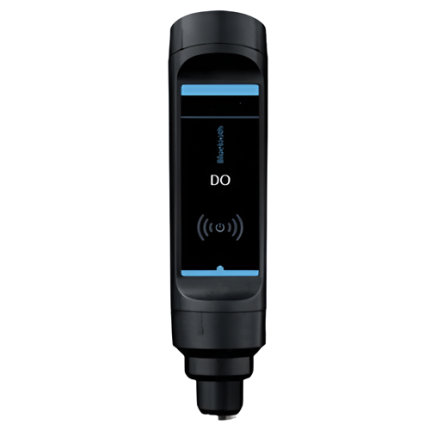Description
Overview of Bin Identification Using BLE or RFID
Bin identification using Bluetooth Low Energy (BLE) or Radio Frequency Identification (RFID) is crucial for efficient waste management in various settings. BLE-based systems employ battery-powered tags attached to bins, which periodically broadcast unique identifiers. These signals are picked up by BLE readers, either stationary or mobile, and transmitted to a central system for processing. BLE offers advantages such as low power consumption, cost-effectiveness, and a substantial range, making it ideal for municipal and industrial waste management, as well as event waste control. On the other hand, RFID systems utilize tags that can be passive, active, or semi-passive. RFID readers emit radio waves that activate these tags, which then send back their identifiers. RFID is known for its high data transmission speed, ability to read multiple tags simultaneously, and robust durability. It’s particularly useful for asset tracking, inventory management, and access control. While BLE is favored for its long battery life and cost efficiency, RFID stands out with its fast read speeds and ruggedness. The choice between BLE and RFID depends on specific operational needs, with BLE being suitable for broad, scalable deployments, and RFID excelling in environments requiring rapid, multiple tag readings and enhanced durability.
Applications in Bin Identification Using BLE or RFID
- Residential waste bin location tracking
- Commercial waste bin collection scheduling
- Industrial hazardous waste bin monitoring
- Construction site waste bin tracking
- Event waste bin fill level monitoring
- Smart city-integrated waste management
- Public Park waste bin tracking
- University campus waste management
- Hospital waste bin monitoring
- Airport waste bin management
- Shopping mall waste bin tracking
- Stadium waste bin monitoring
- Amusement park waste management
- Office complex waste bin tracking
- Hotel waste bin monitoring
- Marina waste bin management
- Tourist attraction waste bin tracking
- Festival waste bin monitoring
- Concert venue waste bin management
- Beach waste bin tracking
- Automated residential waste collection
- Commercial waste bin asset tracking
- Industrial waste bin inventory management
- Real-time construction site bin tracking
- Event waste bin access control
- Smart city automated waste collection
- Public Park bin location and status tracking
- University campus bin inventory management
- Hospital secure waste disposal management
- Airport waste bin asset tracking
- Shopping mall bin fill level monitoring
- Stadium waste bin inventory tracking
- Amusement park automated bin scanning
- Office complex secure waste area management
- Hotel waste bin location tracking
- Marina waste bin access control
- Tourist attraction bin inventory management
- Festival automated waste bin tracking
- Concert venue waste bin access control
- Beach waste bin inventory and fill level monitoring
Technical Specifications of Bin Identification Using BLE or RFID
BLE Beacons or RFID tags in Bin Identification Systems
Bin identification systems using Bluetooth Low Energy (BLE) beacons or Radio Frequency Identification (RFID) tags have specific technical specifications tailored to their unique applications. BLE beacons operate in the 2.4 GHz ISM band with adjustable transmission power ranging from -40 dBm to +4 dBm, providing a range of up to 100 meters depending on the environment and power settings. These beacons, typically compact and lightweight (around 5 x 5 cm or smaller), have a battery life varying from several months to years, commonly powered by coin cell batteries like the CR2032. BLE beacons broadcast unique identifiers at configurable intervals, compatible with Bluetooth 4.0 and later versions, and can be detected by smartphones and other BLE-enabled devices. They are available in weatherproof and rugged enclosures for outdoor use, with an operating temperature range from -20°C to +60°C. Deployment is straightforward, requiring minimal setup, and they offer basic encryption and authentication for security.
On the other hand, RFID tags operate across different frequency ranges: Low Frequency (LF) at 125-134 kHz, High Frequency (HF) at 13.56 MHz, and Ultra-High Frequency (UHF) at 860-960 MHz. The read range varies by frequency, with LF up to 10 cm, HF up to 1 meter, and UHF up to 10 meters or more. RFID tags can be passive, powered by the reader’s signal; active, battery-powered for longer range; or semi-passive, battery-assisted for moderate range. These tags have varying memory capacities, from a few bytes to several kilobytes, and come in a wide variety of sizes, from small adhesive labels to larger rugged tags. They store unique identifiers and additional data, using protocols like ISO 14443, ISO 15693 (HF), and EPC Gen 2 (UHF), requiring compatible RFID readers. RFID tags are available in different enclosures, from simple paper labels to ruggedized, weatherproof casings, with varying operating temperature ranges. Deployment involves attaching the tags to bins using adhesives or protective housings and setting up RFID readers at strategic locations. RFID systems offer data encryption, authentication, and anti-collision protocols for higher security and handling multiple tags simultaneously.
Both BLE and RFID systems provide effective solutions for bin identification, with BLE beacons suited for longer range and common device compatibility, and RFID tags offering diverse options for range, cost, power requirements, and environmental conditions. The choice between BLE and RFID depends on specific operational needs and the context of use.
BLE Gateways or RFID Readers in Bin Identification Systems
In bin identification systems, BLE gateways and RFID readers serve crucial roles with distinct technical specifications. BLE gateways operate in the 2.4 GHz ISM band and connect via Wi-Fi, Ethernet, or cellular networks, covering ranges up to 100 meters. They are powered by AC adapters, PoE, or solar panels, and are designed to handle multiple BLE beacon signals simultaneously, with minimal maintenance and secure data transmission. These gateways are compact, with weatherproof and rugged options available for outdoor use, and are easy to install, often with plug-and-play capabilities.
RFID readers, on the other hand, operate across various frequency ranges—Low Frequency (LF) at 125-134 kHz, High Frequency (HF) at 13.56 MHz, and Ultra-High Frequency (UHF) at 860-960 MHz—with read ranges from 10 cm to over 10 meters depending on the frequency. They connect via Ethernet, Wi-Fi, or cellular networks and support various data transmission protocols. RFID readers can be powered by AC adapters, PoE, or batteries, and are capable of reading multiple tags simultaneously due to anti-collision features. They come in different sizes, from handheld to fixed-mounted models, and are available in rugged and weatherproof designs for harsh environments. RFID readers require periodic calibration and offer strong security features, including data encryption and authentication.
Both BLE gateways and RFID readers are essential for effective bin identification, with BLE gateways offering ease of integration and compatibility with common devices, while RFID readers provide precise tracking capabilities with varied range options. The choice between these technologies depends on the specific requirements of the waste management system, including range, environmental conditions, and the need for secure data handling.
Cloud Systems
GAO Cloud BLE or RFID Systems consists of the following parts:
GAO BLE Gateways and Beacons and RFID Readers and Tags
BLE or RFID Cloud, Server, PC & Mobile
GAO Cloud Services Engine for BLE or RFID
Data Collection and Integration, Data Storage, Real-Time Analytics, Dashboard and Reporting, Alerts and Notifications, Security and Compliance, Scalability and Flexibility, and User Interface and Accessibility.
Integration APIs
APIs enable seamless integration between the BLE or RFID solution and existing bin identification systems such as Data Exchange API, Real-Time Updates API, Custom Integration API, Authentication API, Reporting API, Device Management API, Alerts API, and User Management API.
Server, PC & Mobile Systems
GAO Server, PC & Mobile BLE or RFID Systems are composed of
BLE Gateways and Beacons, RFID Tags and Readers,
GAO Server, PC & Mobile Software Engine for BLE & RFID
Servers, PCs, Mobile Computing Devices and Infrastructure, Middleware Software, and Database Management System.
Integration with Bin Identification Systems
The server, PC and mobile solution integrates with existing bin identification systems such as inventory management, point-of-sale (POS), and enterprise resource planning (ERP) systems. Integration is achieved through APIs, database connections, or middleware adapters, enabling seamless data exchange and synchronization.
All GAO’s RFID products are jointly offered by GAO Tek Inc. and its sister company GAO RFID Inc., ranked as a top 10 global RFID and IoT supplier. For RFID products on https://gaotek.com/, please visit RFID-BLE category, and its sub-categories: BLE Gateways, Beacons & Accs, UHF Readers, Tags & Accs, NFC & HF Readers, Tags & Accs, LF Readers, Tags & Accs, and BLE or RFID Cloud, Server, PC & Mobile.
You also are encouraged to visit gaorfid.com that offers a more comprehensive, more complete and different set of BLE & RFID products: BLE, RFID Readers, RFID Tags, Antennas & Accessories, RFID Systems, System By Feature.



